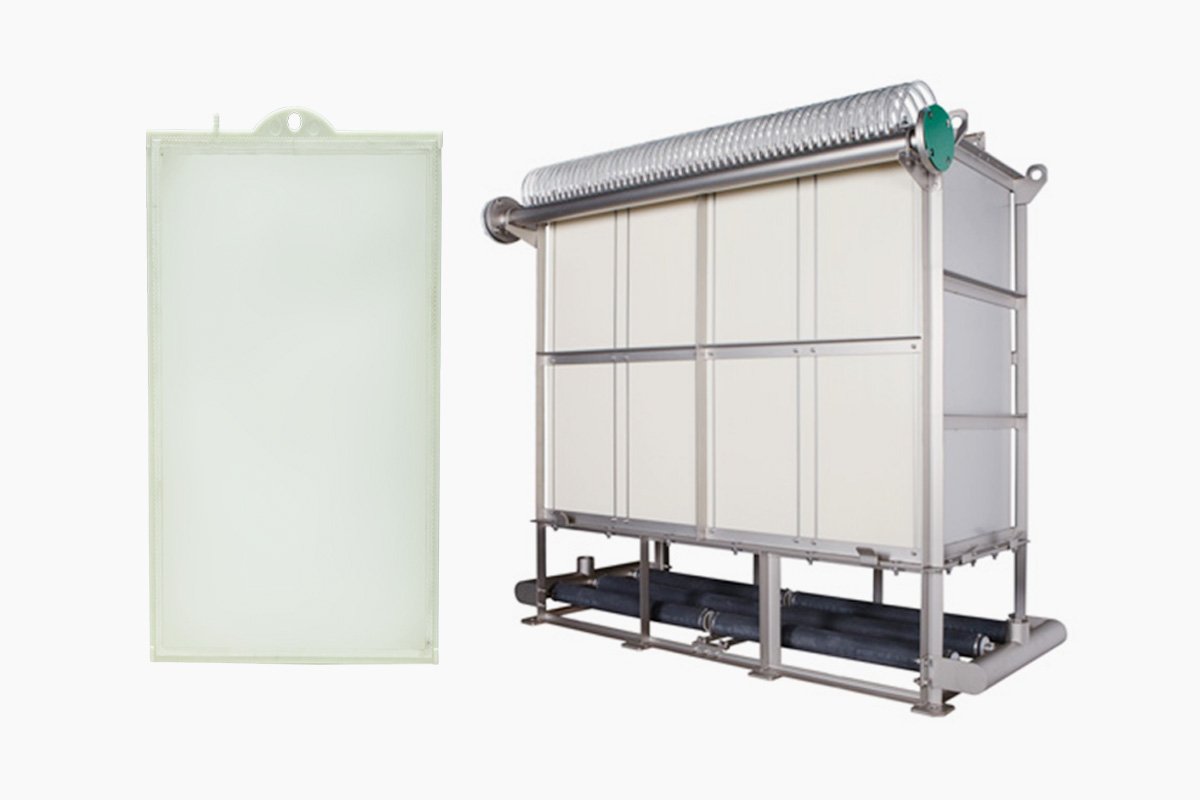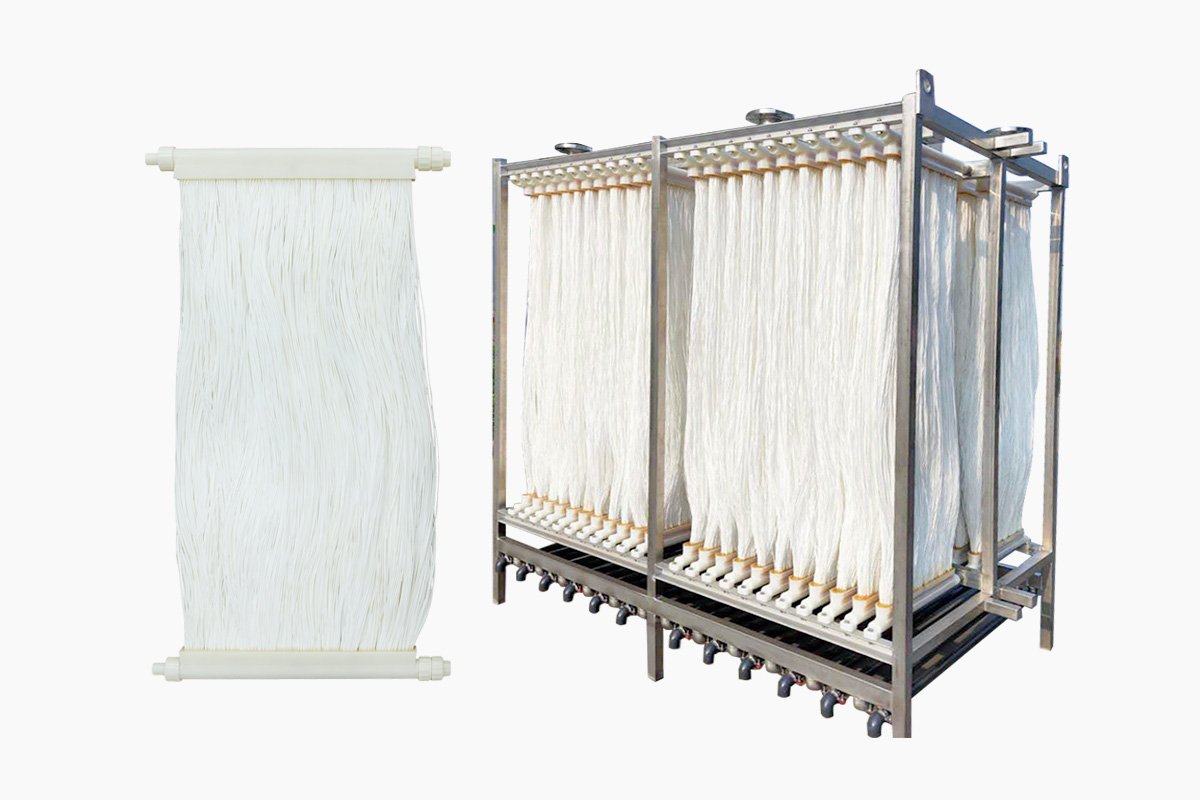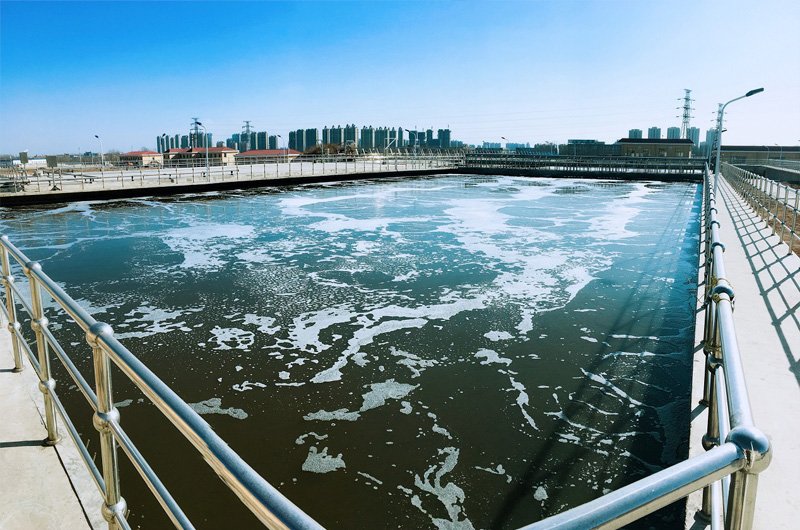
Membrane Bioreactors (MBR)
Whether you are replacing an old project or designing a new project, we can provide it for you based on our rich experience. We have professional sales staff to connect with you to solve all your problems from purchasing to using the MBR membrane.
Membrane Bioreactor (MBR) for Wastewater Treatment
We can provide flat membranes, hollow fiber membranes and sewage treatment components, including sewage treatment solution design and subsequent maintenance guidance
Our Comprehensive Services
Solution Design
Custom wastewater treatment solutions tailored to your specific needs
Installation Support
Professional installation and commissioning services
Maintenance Guidance
Ongoing maintenance support and technical guidance
MBR Technology Comparison
Comprehensive comparison between Hollow Fiber and Flat Sheet Membrane Bioreactor (MBR) technologies for wastewater treatment applications
Key Differences Overview
Hollow fiber configurations are designed for higher fluxes, operated at lower concentrations, cleaned more often and protected by stricter pre-treatment compared to flat sheet systems. The filterability of activated sludge from municipal MBRs is superior to industrial MBRs and remains independent of membrane configuration.
| Comparison Factor | Flat Sheet MBR | Hollow Fiber MBR |
|---|---|---|
| Usage Rate |
Around 15%
|
Around 85%
|
| Material |
PVDF
|
PVDF
|
| Flux Range | 10L/m²/h ~ 40L/m²/h | 10L/m²/h ~ 40L/m²/h |
| Pre-processing Requirements |
No Special Requirements
|
Hair Removal Required
|
| Packing Density |
Toray TMR140-100s
140m² needs 2.756 m³
|
Dow FLEXELL
80m² needs 0.7056 m³
2x Higher Density
|
| Pollution Recovery Method |
Air Scrubbing
Chemical Cleaning
|
Backwash
Air Scrub
Enhanced Backwash
Chemical Cleaning
|
| Operational Risk |
Membrane Rupture Risk
"Fat belly" phenomenon
|
Fiber Breakage Risk
Minimized with TIP process
|
| Self-healing |
No Self-healing
|
Self-healing Function
|
| Component Structure |
Large Modular
Requires lifting equipment
|
Single Element
Easy single-person maintenance
|
| Energy Consumption |
Air-water ratio 30:1
High gas consumption
|
Gas-water ratio 3:1~5:1
Low energy consumption
|
| Chemical Wash |
Manual + Chemical
Labor intensive
|
Chemical Immersion
Automated, single operator
|
Material Advantage
PVDF's superior oxidation resistance compared to other materials (such as PE) makes it the mainstream material for MBR membranes in sewage treatment and reuse applications.
Backwash Advantage
Backwashing is the most ideal pollution recovery method for the membrane industry. The inability to backwash is the biggest defect of flat membranes, leading to shortened chemical cleaning cycles.
Membrane Bioreactors (MBRs)
Advantages And Applications
Membrane Bioreactors (MBRs) can be broadly defined as a system that combines wastewater biodegradation with membrane filtration. They have proven to be very effective in removing organic and inorganic pollutants as well as biological entities from wastewater.
Technology Overview
There are many types of MBR such as tubular, plate and hollow fiber. Among them, hollow fiber PVDF material has been proven to be the most reasonable in price and good in performance. The membranes used had pore sizes ranging from 0.01 to 0.4 µm.
Advantages of MBR Technology
Automated Control
Good control of biological activity with automatic STP system operation and reduced labor costs
High Quality Effluent
Produces effluent free of bacteria and pathogens with superior water quality
Compact Design
Smaller plant size with lower space requirements due to higher MLSS and short HRT
Higher Loading Rates
Capable of handling higher organic loading rates efficiently
Applications of MBR Technology
Currently, MBR is widely applied to all types of wastewater, including water recycling in buildings, wastewater treatment for small communities, industrial wastewater treatment, landfill leachate treatment, and agricultural wastewater processing.
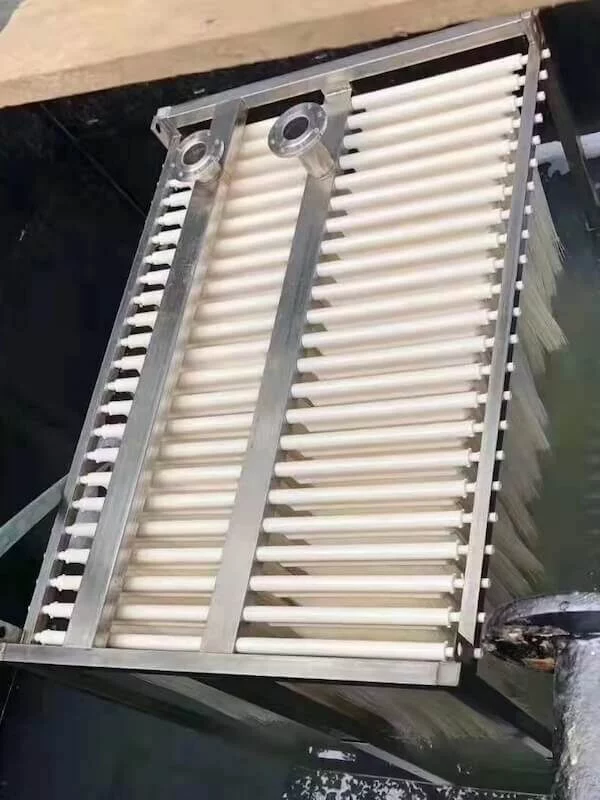
Municipal Wastewater Treatment
MBR systems were initially used for municipal wastewater treatment, primarily in the area of water reuse and recycling. Compactness, production of reusable water, and trouble-free operation made the MBR an ideal process for recycling municipal wastewater in water and space limited environments.
Industrial Wastewater Treatment
High organic loadings and very specific and difficult to treat compounds are two major characteristics of industrial waste streams that render alternative treatment techniques such as the MBR desirable. Since traditionally wastewater with high COD content was treated under anaerobic conditions, initial attempts of MBR applications for industrial wastewater were in the field of anaerobic treatment.
Also effective removal of nitrates, herbicides, pesticides, and endocrine disrupting compounds may be achieved by MBRs.
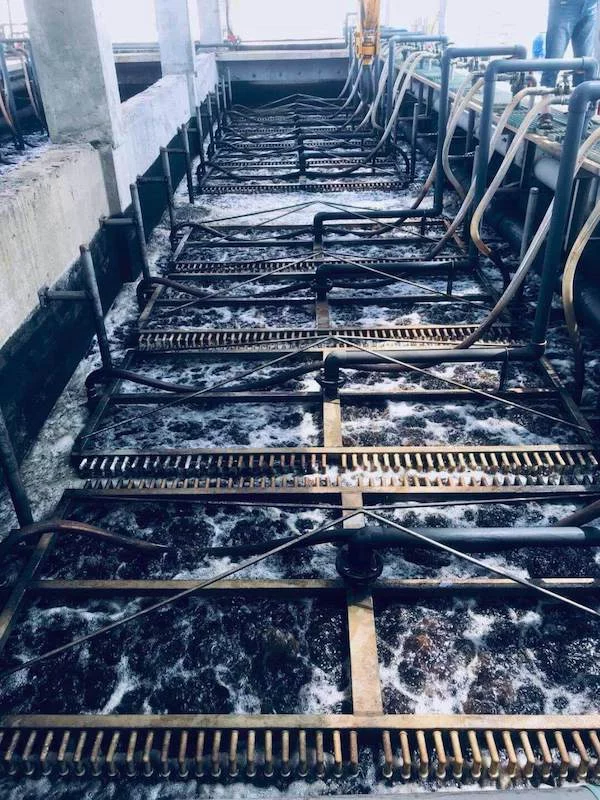
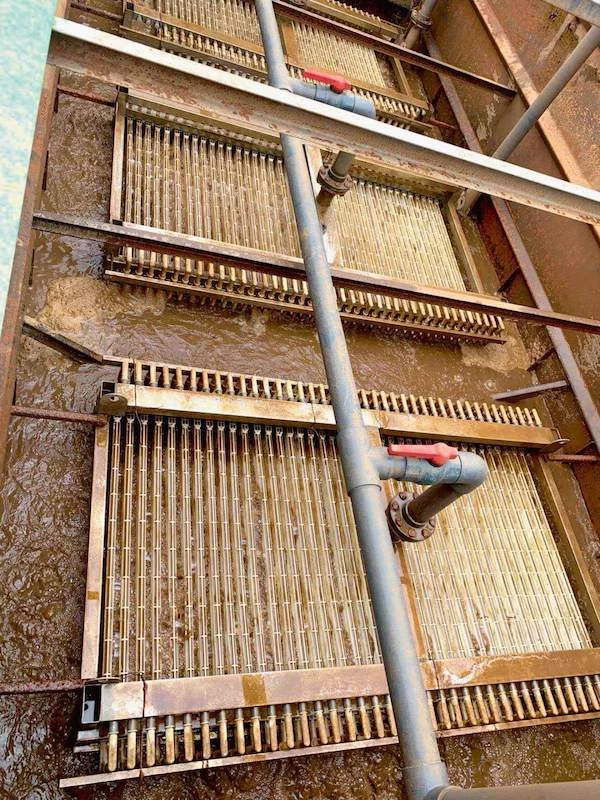
Specialized Applications
In addition to municipal and industrial wastewater treatment, MBRs have been utilized in a number of other areas. One such area is the treatment of landfill leachates. Landfill leachates usually contain high concentrations of organic and inorganic compounds.
MBR systems have been successfully utilized with an additional treatment step for inorganics and heavy metal removal, such as Ultra Filtration and reverse osmosis (RO). Several industrial scale plants, combining a MBR, Ultra filtration and a reverse osmosis system, are presently operated.
MBR Sewage Treatment Integrated Equipment
Advanced membrane bioreactor technology for efficient wastewater treatment with compact design and superior performance
100T per day MBR Sewage Treatment Integrated Equipment
Our state-of-the-art MBR integrated equipment combines biological treatment with membrane filtration technology, delivering exceptional water quality while maintaining compact footprint and energy efficiency.
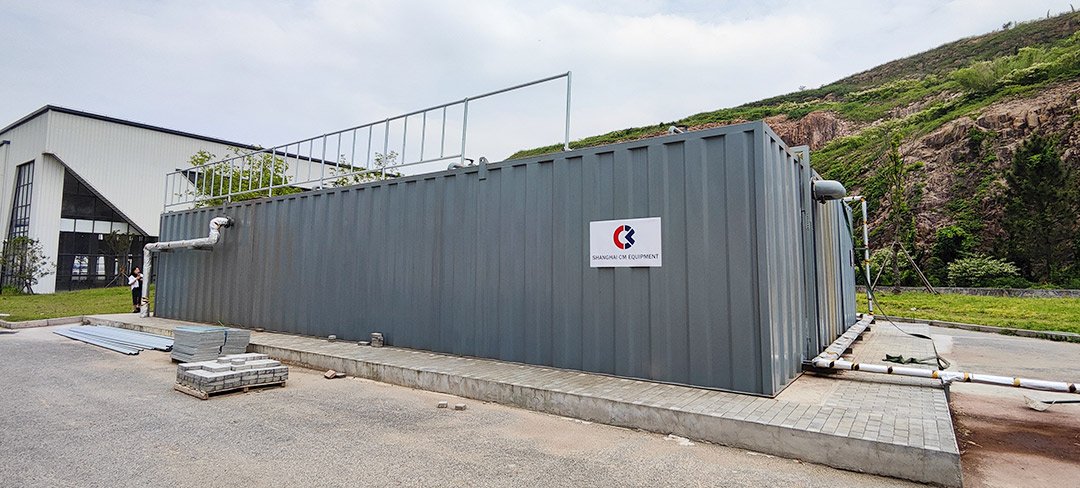
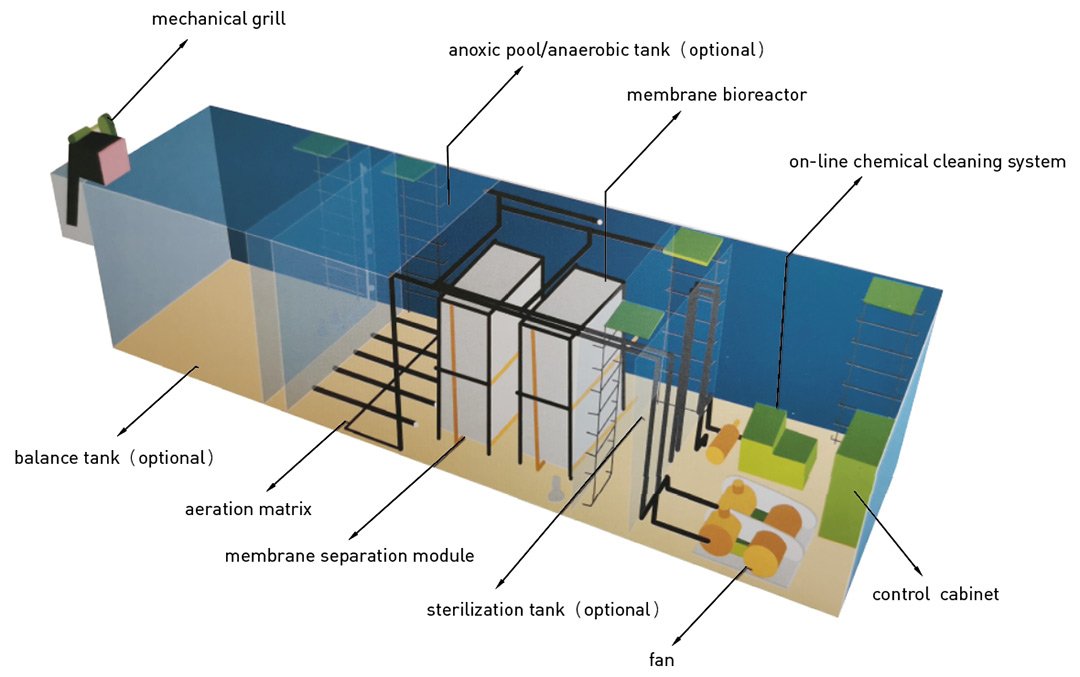
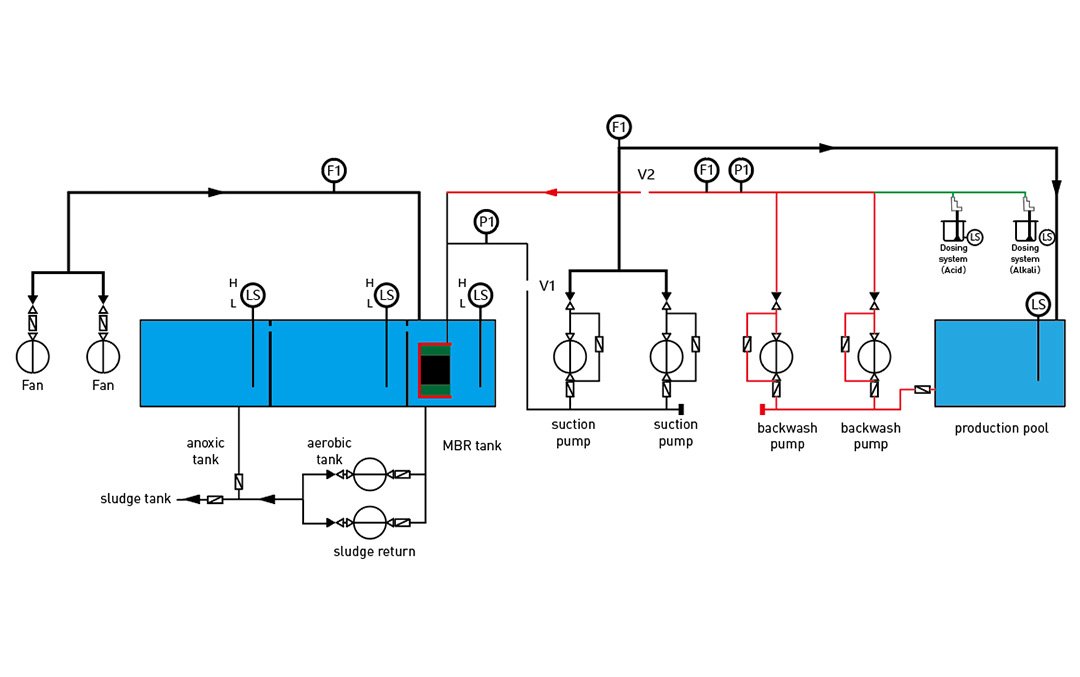
Key Features & Specifications
Advanced MBR Technology
Combines biological treatment with membrane filtration for superior effluent quality
Automated Control
Intelligent PLC control system with remote monitoring capabilities
Eco-Friendly
Low energy consumption with minimal environmental impact
FAQ
Get answers to the most frequently asked questions about membrane bioreactor technology for wastewater treatment systems.
A Membrane Bioreactor (MBR) is an advanced wastewater treatment technology that combines biological treatment with membrane filtration. It uses microorganisms to break down organic pollutants while ultrafiltration or microfiltration membranes physically separate treated water from biomass, producing high-quality effluent suitable for reuse or discharge.
MBR systems offer superior effluent quality, smaller footprint requirements, higher biomass concentration, excellent pathogen removal, consistent performance regardless of influent variations, and the ability to operate at higher organic loading rates. They also eliminate the need for secondary clarifiers and produce less excess sludge.
MBR systems can effectively treat municipal wastewater, industrial effluents from food processing, pharmaceuticals, textiles, and petrochemicals, hospital wastewater, landfill leachate, and greywater from residential or commercial buildings. The technology is particularly effective for high-strength organic wastewater.
Membrane fouling is managed through regular backwashing, air scouring, chemical cleaning with chlorine or citric acid, maintaining optimal mixed liquor suspended solids (MLSS) concentration, proper pre-treatment of influent, and implementing automated cleaning cycles. Proper system design and operation are crucial for minimizing fouling.
MBR membranes typically last 3-7 years depending on the application, influent characteristics, operating conditions, and maintenance practices. Proper cleaning protocols, optimal operating flux rates, and regular monitoring can significantly extend membrane life. Industrial applications may require more frequent replacement than municipal systems.
MBR systems typically consume 0.4-1.2 kWh/m³ of treated water, with energy costs representing 25-50% of total operating expenses. Main energy consumers include membrane aeration, permeate pumps, and biological aeration. Energy efficiency can be improved through optimized aeration control and membrane operation strategies.
Yes, our factory has been engaged in production for more than 15 years.
Of course, you are very welcome to come, please contact us quickly.
MBR systems achieve excellent removal rates: >95% BOD removal, >90% COD removal, >99% suspended solids removal, >90% ammonia removal, >99.9% pathogen removal, and significant reduction in pharmaceuticals and endocrine disruptors. These performance levels consistently exceed conventional treatment methods.
Key design considerations include influent characteristics and flow rates, required effluent quality standards, membrane type and configuration, hydraulic and organic loading rates, aeration requirements, space constraints, local climate conditions, energy availability, operator skill level, and long-term expansion needs.
Need More Information?
Our experts are ready to help you design and implement the perfect MBR solution for your wastewater treatment needs.

